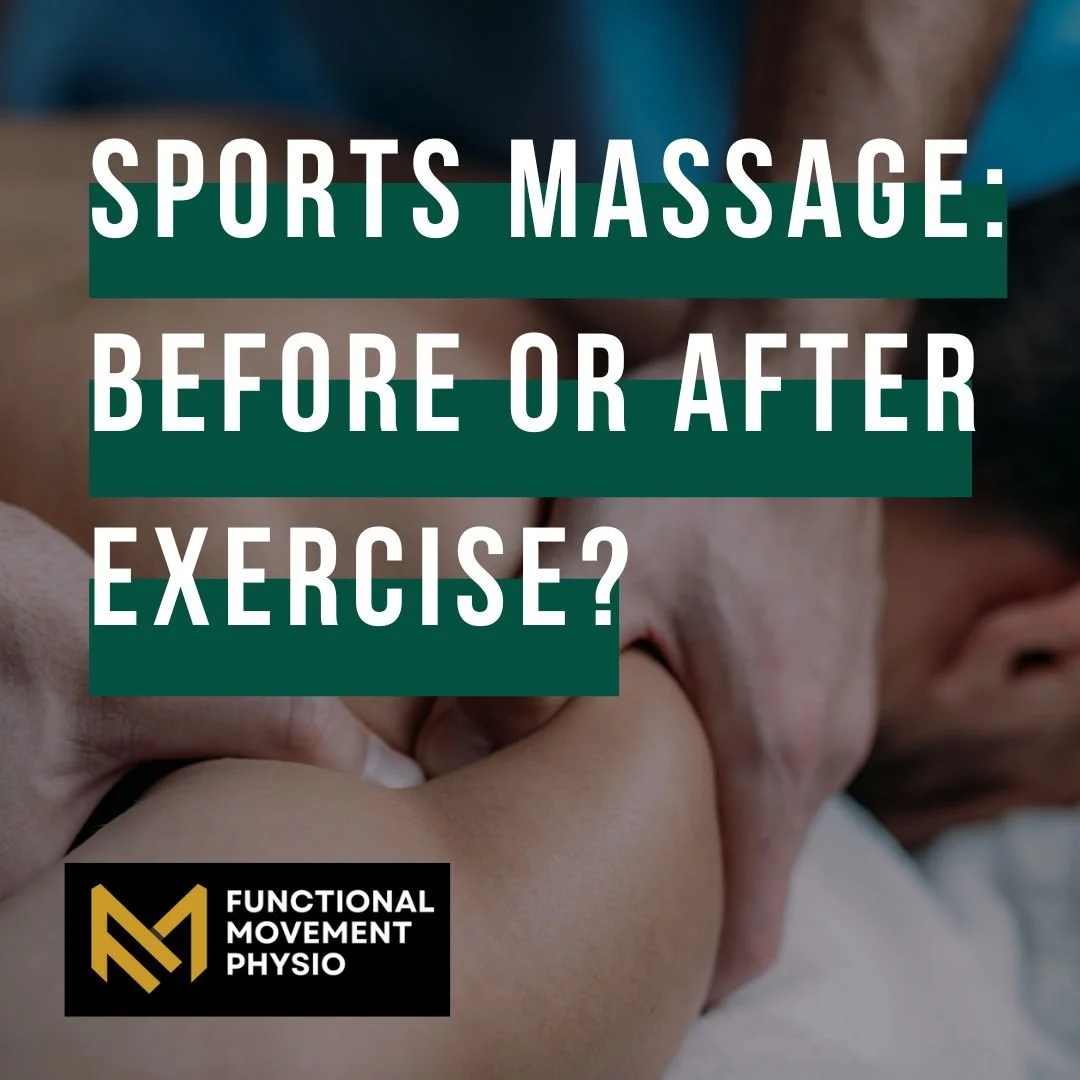Is sports massage better before or after exercise?
If you’re training regularly, recovering from an injury, or preparing for an event, you’ve probably wondered: should I get a sports massage before or after I work out?
At Functional Movement Physio in Liverpool, we get this question all the time. And the answer depends on your goals - whether you're warming up, recovering, or managing tightness from past sessions.
In this blog, we’ll explain the difference between pre-event and post-event sports massage, when to book each one, and how to get the most out of your sessions.
What is a sports massage?
A sports massage is a type of deep tissue treatment designed to support movement, performance, and recovery. It focuses on specific muscle groups that are under stress from training, repetitive use, or injury.
Sports massage is not just for athletes - it’s also ideal for:
Gym-goers
Runners and cyclists
Office workers with tight shoulders or lower back pain
Anyone experiencing muscular tension
Sports massage before exercise
A pre-event sports massage is typically short (15–30 minutes), light to moderate in pressure, and focused on warming up the muscles. The goal is to prepare your body for activity, not to relax it too much.
Benefits of pre-exercise massage:
Increases blood flow to muscles
Helps activate and mobilise key muscle groups
Reduces the risk of muscle strain or injury
Improves flexibility and range of motion
You should schedule it 1–24 hours before a workout or event, depending on the intensity. If you’ve never had one before, don’t try it for the first time right before race day!
Sports massage after exercise
A post-exercise sports massage is more common and generally deeper. It targets areas that are tight, sore, or fatigued from training. The goal is to aid recovery and reduce muscle soreness.
Benefits of post-exercise massage:
Relieves tightness and tension
Helps flush out lactic acid and metabolic waste
Promotes muscle repair and recovery
Reduces delayed-onset muscle soreness (DOMS)
This type of massage is ideal within 24–72 hours after a tough session, competition, or heavy week of training.
So, which is better?
It depends on your needs:
Choose pre-exercise massage if you're gearing up for a performance or intense training session and want to boost mobility and reduce injury risk.
Choose post-exercise massage if your muscles feel heavy, sore, or tight and you're focused on recovering well before your next session.
Many active people benefit from a regular routine, with a deeper massage weekly or fortnightly, and lighter pre-session work as needed.
Final thoughts
Whether you’re training for a race, hitting the gym hard, or just feeling the effects of a busy week, sports massage can help your body perform and recover better. The key is knowing when to book - and how to use massage as part of a smarter training and recovery plan.
Ready to feel the difference?
Book your sports massage at Functional Movement Physio in Liverpool and let us help you move, perform, and recover better.

